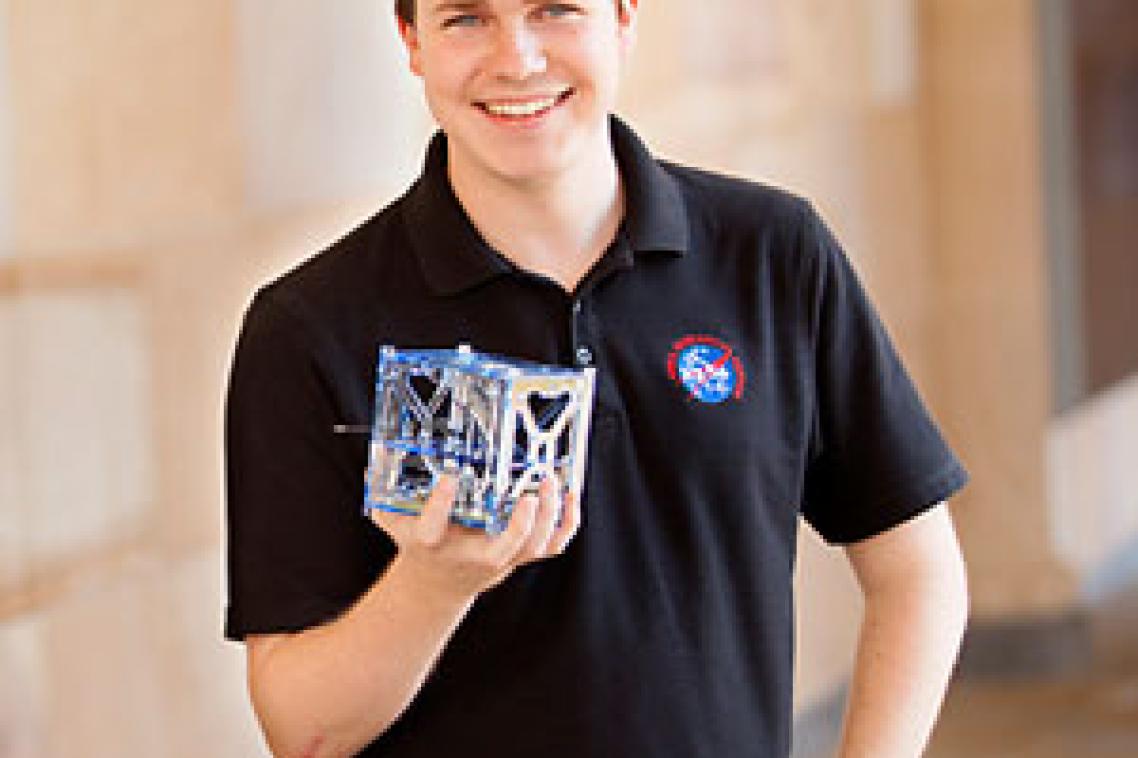Mobile phone technology to power satellite

A University of Queensland staff member is sending a satellite into space more powerful than the Curiosity Rover which recently landed on Mars.
The satellite, which measures 10cm x 10cm, is controlled by an on-board Android mobile phone five times more powerful than its larger space-faring cousin. It also has a camera four times more powerful.
Michael Kehoe, a UQ staff member with Information Technology Services (ITS) and a final year student of the School of Information Technology and Electrical Engineering (ITEE) recently completed a five-week internship with NASA in California.
He was tasked with designing a satellite that used a mobile phone as its on-board computer.
“This is a proof of concept that will be used for a range of later designs,” said Mr Kehoe.
“The satellite uses an attitude determinate control system (ADCS) written by fellow UQ graduate Jasper Wolfe to stop the satellite from spinning and alter its path in orbit,” he said.
“Because it uses a common mobile phone as its central processor, I’ve been able to incorporate some really fun ideas into the satellite. I’ll be able to take temperature, accelerometer and heading readings using the phone’s sensors and photos using the phone’s camera.”
Despite being controlled by a mobile phone, the satellite is not able to phone home.
“Unfortunately there’s no reception in space, so we’ll be using a high-powered radio link to receive data from the satellite,” said Mr Kehoe.
Tracking of the satellite is being set up in America with NASA and in Australia, with the assistance of ITEE. Tracking equipment on top of the Parnell building will monitor the satellite from launch on November 25 to re-entry 12 days later.
The project provides a proof of concept for low cost, rapid design iteration space craft. Total component costs for the satellite are $7800, opposed to Curiosity’s $2.5 billion.
“An example of why this is important can be seen in the Curiosity Rover which landed in August on Mars,” said Mr Kehoe.
“Design work started eight years ago and used cutting-edge technology at the time, but by launch date a common mobile phone had more processing power and better camera. If we can shorten the time it takes to build spacecraft, we can decrease cost and increase the quality of what goes into space.”
More information: http://open.nasa.gov/plan/phonesat/
Media: Nick Manning, n.manning@uq.edu.au
Topics
Related articles

Should you consent to your doctor using an AI scribe? Here’s what you should know.

Thousands of Queensland reef photos lead to worldwide change
Media contact
UQ Communications
communications@uq.edu.au
+61 429 056 139
